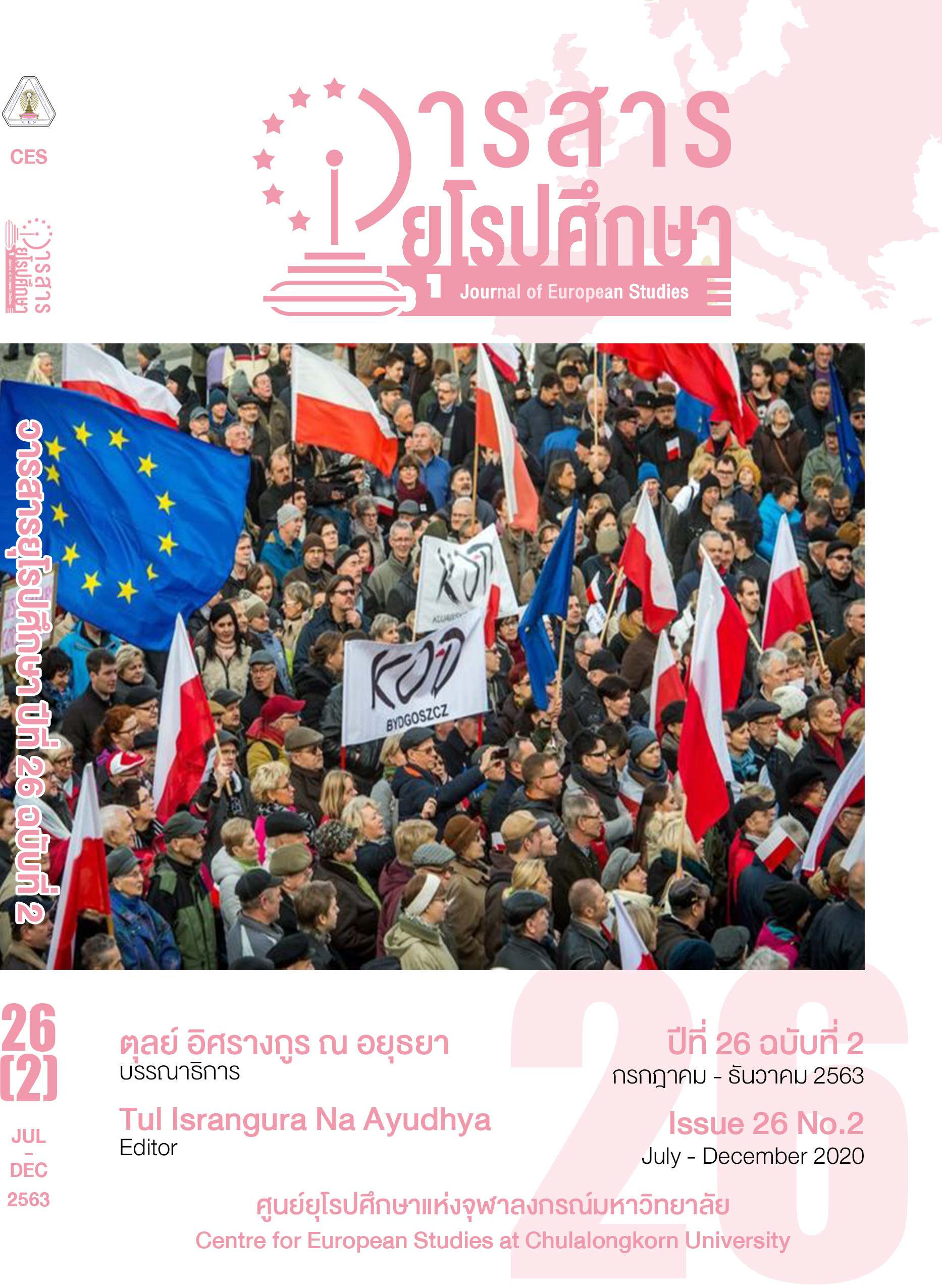Thailand Cultural Image and Destination Image through the Perception of British Tourists
คำสำคัญ:
British Tourists, Cultural Heritage, Destination Image, Thailand, Thainessบทคัดย่อ
Thailand’s cultural heritage and destination image are essential to determine international tourists’ leisure destinations. Since 2015, the Tourism Authority of Thailand has launched the Discovery Thainess campaign to promote Thailand’s brand image and become a global cultural leisure destination. According to UNWTO Tourism Highlights, United Kingdom was ranked on the 4th international biggest spender in the global tourism market, contributing US$ 64 billions to the global tourism industry. Thus, British tourists were the target group of the study due to their conservative behavior and spending power. 550 British tourists’ attitudes and were collected through questionnaire, followed by a focus group interview. This data were collected at the departure passenger site at Suvarnabhumi International Airport. The result showed that British tourists preferred Thai massage and spa, Thai culture tour, Thai cooking,Thai classical dance, and Thai handmade products. In addition, Thailand was perceived as a terrific destination with freedom and relaxation. Overall, the majority of British tourists’ perceptions towards Thailand were great and they are likely to return to Thailand in the next two years.
เอกสารอ้างอิง
Bampen Maitreesophon. “Foreign tourists’ perspective on selecting Thailand the Land of Smile, as a tourist attraction.” in Proceedings-Management, Agroindustry and Tourism Industry-002. 4th International Conference on Humanities and Social Sciences, Faculty of Liberal Arts, Prince of Songkla University, 2012.
Beerli, Asunción and Martin, Josefa. “Tourists’ characteristics and the perceived image of tourist destinations: a quantitative analysis-a case study of Lanzarote Spain.” Tourism Management Vol. 25, (5), October, 2004, 623–636.
Boonsong Kositchoththan. “Thailand Drops in Global Tourism Ranking.” Bangkok Post, April 22, 2015, www.bangkokpost.com/news/general/536583/thailand-drops-in-global-tourism-rankings (accessed on Jan, 2020).
Casey, Mary Anne and Krueger, Richard A Focus Group, A Practical Guide for Applied Research Vol. 15th. SAGE Publications, 2015.
Casey, Mary Anne and Krueger, Richard A. Focus Groups, A Practical Guide for Applied Research. Sage Publications, 2000.
Esfehani, Minoo.“Intangible Culture Heritage in Tourism Strategy.” in Emerald Publishing Limited 2019: Experience Persian Heritage: Perspectives and Challenges Bridging Tourism Theory and Practice Volume 10, 2019, 65-79.
Ketter, Eran. “It’s all about you: destination marketing campaigns in the experience economy era.” Tourism Review Vol.73, No.3, (2018).
Makkar, A and Singh, S. “Critical performance Analysis of Tourism Finance Cooperation of India.” GMJ Vol. V, Issue 1&2 (January-December, 2011).
Ministry of Tourism & Sports. “International Tourist Receipts Arrivals.” Last modified January-December, 2017, https://www.mots.go.th/ewtold/ewt/mots_en57/main.php?filename=Tourist_arrival (accessed on March 5, 2020).
Niti Wirudchawong. “Policy on Community Tourism Development in Thailand.” Working Paper, Office of the Ombudsman Thailand, 2012. https://mekongtourism.org/wp-content/uploads/Policy-on-Community-Tourism-Development-in-Thailand.pdf. (accessed on May 5, 2020).
Panisa Mechinda, Sirivan Serirat, Jirawat Anuwichanont, and Nak Guild, “An Examination of Tourists’ Loyalty Towards Medical Tourism in Pattaya, Thailand.” International Business & Economics Research Vol. 9, No.1, January, 2010: 55 – 70.
Pinn Janvatanavit. “An open conversation about ‘Thainess.”Bangkok Post, June, 18, 2015. https://www.bangkokpost.com/life/social-and-lifestyle/596376/an-open-conversation-about-thainess (accessed on August 5, 2020).
Suchat Siritama. “Discover ‘Thainess’ campaign has little effect.” The Nation, August 4, 2016. https://www.nationthailand.com/business/30292077 (accessed on January, 2020)
Suhartanto, Dwi, Ruhadi and Triyuni, Ni Nyoman. “Tourist loyalty toward shopping destination: the role of shopping satisfaction and destination image.” European Journal of Tourism Research Vol.13 (2016): 84-102.
“TAT launches latest viral sensation illustrating Thailand through Pad Thai cooking.” TAT News, January 10, 2017. http:/www.tatnews.org/tat-launches-latest-viral-sensation-illustrating-thailand-through-pad-thai (accessed on May 5, 2018).
Thailand Authority of Tourism (TAT). “2015 Discover Thainess Campaign.” Last modified 2015. http://www.tatpr.org/webdatas/files/Fact%20Sheet_2015%20Discover%20Thainess%20Final(1).pdf. (accessed on May 5, 2020)
“Travel & Tourism Economic Impact 2018 Thailand.” World Travel and Tourism Council, March 2018. https://www.wttc.org/economic-impact/ (accessed on March 5, 2020).
Wanida Wadeecharoen. “The Factors Affecting International Tourist Perspective on Destination Satisfaction: The Case of Malaysia Singaporean and Laotian Visiting in Thailand.” Research Publication, Thai-Nichi Institute of Technology, 2016.
World Tourism Organization.“UNWTO Tourism Highlights 2017 Edition.”Last modified 2017, https://www.wttc.org/economic-impact/ (access on March 5, 2020).
Zhenhua Liu. “Sustainable Tourism Development: A Critique.” Journal of Sustainable Tourism Vol.11, No.6, No.3 (December, 2003) :459-475.



